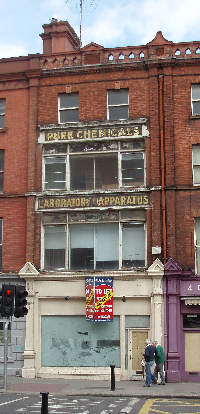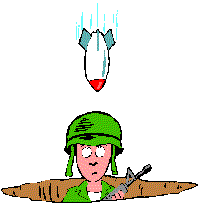
1001 things a boy could (used to) do! #1
We Europeans are constantly lectured by our US counterparts on the significance of 9/11, the day foreign terrorism came to the USA.After this day, all is changed, changed utterly. Civil rights take second, or third, or fourth place to homeland security. Possession of an incendiary device (excluding cigarette lighters) is grounds for suspicion and curtailment of rights.
Europeans have been living against a background of terrorism of various hues for a long time, and while this has changed some of our traditional comfortable assumptions, I think we have avoided the hysterically introverted self-fixated reaction of US Americans.
It all reminds me of the time I nearly got arrested (I think) as a likely IRA terrorist.
I jest, but only just.
I recall a book called something like "A hundred things a boy could do", or was it a thousand. Anyway it was designed to keep young boys occupied and out of mischief. One of the natty little items in it was how to make treasure maps, of the kind that used to be very popular in Christmas crackers. All you needed was a piece of greaseproof paper, a small paint brush of the kind found in childrens painting sets, a small quantity of potassium nitrate powder and a little water.

You drew a treasure map on the greaseproof paper and marked a starting point well away from the location of the treasure. You then drew a line, with the paint brush and a very strong solution of the potassium. This went from the starting point, either to the treasure or not, but taking the most circuitous route possible without crossing your tracks. As the line dried out the potassium impregnated itself into the paper but left no visible trace.
The lucky recipient would then touch the starting point with a lighted cigarette, of which there were plenty in those days, and the paper would smoulder along the pre-ordained route.
Great fun for a lad growing up in the late 1950s.
When my own kids were growing up in the late 1970s, early 1980s, I thought to show them this trick. I went to buy a small quantity of the potassium only to find that, in the meantime, it had become a controlled substance and the assumption was that I wanted it for some, however minute, terrorist outrage. I was glad to leave the store with my civil liberty still intact.
 I should explain that potassium nitrate, or saltpetre, is one of the three
ingredients of gunpowder, the others being sulphur and charcoal. When I was
young all of these ingredients could be freely bought in Lennox Chemicals in
Clare St. in Dublin. If you were making gunpowder, you only had to follow the
formula the first time. As the ingredients were such distinctive and different
colours, white, yellow and black, there was only one combination which gave the
correct colour so you could mix by sight, so to speak.
I should explain that potassium nitrate, or saltpetre, is one of the three
ingredients of gunpowder, the others being sulphur and charcoal. When I was
young all of these ingredients could be freely bought in Lennox Chemicals in
Clare St. in Dublin. If you were making gunpowder, you only had to follow the
formula the first time. As the ingredients were such distinctive and different
colours, white, yellow and black, there was only one combination which gave the
correct colour so you could mix by sight, so to speak.If you weren't entirely sure you had got it right you could take a teaspoon of the stuff, light it and see how it burned. Mind you, this could be hazardous, particularly if, like me, you were not paying full attention. I remember a spark jumping off the spoon into the dish of gunpowder and the whole thing ignited giving off the most acrid of fumes. You just had to run, and when you are in your house attic at the time this can be a problem. When I returned after the smoke had cleared, there was a neat round hole burned into the floor. The dish had been made of plastic and I was lucky the whole house had not gone up in smoke. Therefore: DO NOT TRY THIS AT HOME.
 Apart from gunpowder, which would not have been a common product among my age
group, there were two other sorts of bombs which were quite common.
Apart from gunpowder, which would not have been a common product among my age
group, there were two other sorts of bombs which were quite common.
The copper pipe bomb consisted of a mixture of copper sulphate (a well known blue weedkiller) and sugar, stuffed into a piece of copper piping which was hammered closed at each end. A hole was left in the middle for the fuse, which consisted of more of the same powder. These small bombs could be quite powerful and were often used to demolish bits of stone walls. They were also potentially very dangerous for the maker, particularly if you were foolish enough to hammer the pipe closed after inserting the powder!
The other common type was the carbide bomb , which was more for noise than destructive power. This consisted of a small tin (such as a cocoa tin) with a tiny hole bored in the bottom. A piece of carbide (looking like a lump of chalk) was spat on and put in the tin and the lid closed tight. You let the fumes build up inside the tin and, holding it sideways on the ground with your foot, lit a match at the hole. There followed a very loud bang as the lid was blown off the tin and travelled some distance.
All of this seemed very innocent, if potentially dangerous, at the time.
Attitudes have changed, however, due to the tragic events since then and these activities would not be met with the same benign tolerance now as then.